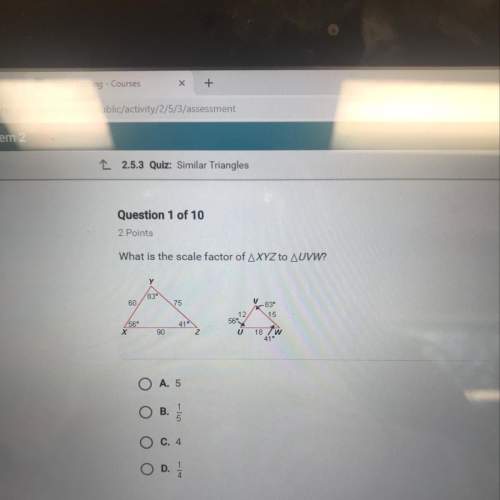
Mathematics, 28.11.2019 05:31 babyphoraaaaa
Researchers doing a study comparing time spent on social media and time spent on studying randomly sampled 200 students at a major university. they found that students in the sample spent an average of 2.3 hours per day on social media and an average of 1.8 hours per day on studying. if all the students at the university in fact spent 2.2 hours per day on studying, with a standard deviation of 2 hours, the shape of the sampling distribution of the sample average time spent studying is: o normal, centered at 1.8. onormal, centered at 1.8 only if all samples have a sample average of 1.8 hours studying. o normal, centered at 2.2. normal, centered at 2.2 only if the studying times are normally distributed.

Answers: 3


Other questions on the subject: Mathematics


Mathematics, 21.06.2019 21:30, ladydeathanddea
Amira is painting a rectangular banner 2 1/4 yards wide. the banner will have a blue background. amira has enough paint to cover 1 1/2 square yards of the wall. the school colors are blue and yellow, so amira wants to add yellow rectangles on the left and right sides of the blue rectangle. the yellow rectangles will each be 3/4 yards wide and the same height as the blue rectangle. what will be the total area of the two yellow rectangles?
Answers: 3

Mathematics, 22.06.2019 00:00, brandon1748
Ascientist studied a population of workers to determine whether verbal praise and/or tangible rewards affect employee productivity. in the study, some workers were offered verbal praise, some were offered tangible rewards (gift cards, presents, and some were offered neither. the productivity of each participant was measured throughout the study by recording the number of daily tasks completed by each employee. which inference might the scientists make based on the given information? a.) the number of daily tasks completed by each employee may influence the dependent variable, which is whether the employee receives verbal praise, tangible rewards, or neither. b.) verbal praise and/or tangible rewards may influence the independent variable, which is the number of daily tasks completed by each employee. c.) verbal praise and/or tangible rewards may influence the dependent variable, which is the number of daily tasks completed by each employee. d.) the dependent variables, which are verbal praise and tangible rewards, may influence the number of daily tasks completed by each employee.
Answers: 1

Mathematics, 22.06.2019 03:30, asianpatriot7375
Jennifer graphs the function f(x)=x squared. then she graphs the function f(x-3). how does the graph f(x-3) differ from the graph of f(x)
Answers: 1
You know the right answer?
Researchers doing a study comparing time spent on social media and time spent on studying randomly s...
Questions in other subjects:

English, 08.03.2021 16:00

Computers and Technology, 08.03.2021 16:00

French, 08.03.2021 16:00







History, 08.03.2021 16:00




